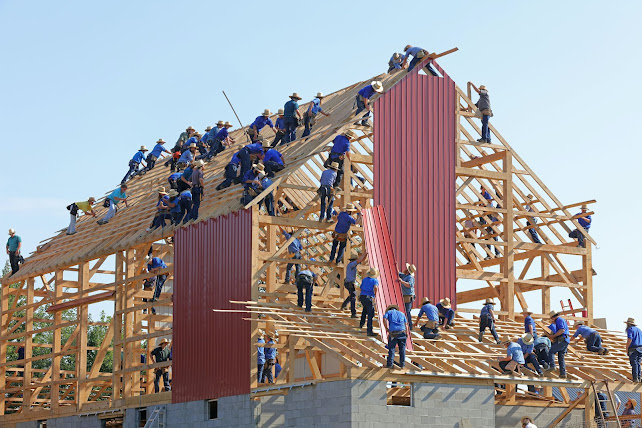When it comes to building a house, there are a lot of different factors to consider. One of the most important decisions you'll have to make is what kind of construction you want to use. Timber framing and "post-and-beam" construction are both traditional methods that have been used for centuries. But what are the advantages and disadvantages of each? Let's take a closer look.
Advantages of Timber Framing:
1. Aesthetics - Timber frame homes have a unique, rustic look that is really quite striking.
2. Strength - Timber framed homes are extremely strong and durable. They can withstand high winds and heavy snow loads.
3. Energy Efficiency - Timber frame homes are very energy efficient. The thick walls provide excellent insulation, keeping your home warm in the winter and cool in the summer.
4. Flexibility - Timber frame construction is very flexible, so you can easily make changes or additions to your plans as you go along.
5. Environmentally Friendly - Timber frame construction is environmentally friendly because it uses renewable resources and has a very low carbon footprint.
Disadvantages of Timber Framing:
1. Cost - Timber framing can be quite expensive, especially if you use high-quality timbers.
2. Time Consuming - Timber framing is a very time-consuming process. It can take months or even years to complete a project depending on its size and complexity.
3. Requires Specialized Skills - Unless you're an experienced carpenter or builder, you'll need to hire someone who knows how to do timber framing in order to build your home. This can add significantly to the cost of your project.
4. Weather Dependent - Timber framing is weather dependent, so you may have to wait for ideal conditions before you can start building.
Advantages of Solid Masonry Construction:
1. Aesthetics – A solid masonry home can be designed to fit any style or taste – from classic brick colonial to modern stucco ranch. And because masonry doesn’t rot or deteriorate over time, your home will retain its good looks for generations to come.
2. Strength – A solid masonry home is extremely strong and durable, able to withstand high winds, fire, earthquakes and other natural disasters that would level a wood frame house like toothpicks.. In fact, many insurance companies offer discounts on premiums for masonry homes because they pose such a low risk..
3. Low Maintenance – Because masonry doesn’t rot, warp or degrade over time, it requires little upkeep and maintenance.
4. Pest Resistant – Insects and other pests are attracted to wood because it’s their natural habitat. But because masonry is made from inorganic materials (stone, brick, concrete), pests are not attracted to it.
5. Environmentally Friendly – Masonry is an environmentally friendly building material because it doesn’t off-gas toxins into the atmosphere like some synthetic materials do. It also has a high recycled content (brick typically contains 30% recycled content; concrete can reach up to 70% recycled content).
Disadvantages of Solid Masonry Construction:
1. Cost – The initial cost of constructing a solid masonry home is usually higher than that of building a comparable wood frame house.. But when you factor in the long-term costs associated with maintaining a wood frame house – painting, replacing rotted wood siding/trim, etc.The overall cost of ownership for a masonry home becomes much lower.
2. Weight – Because solid masonry construction uses heavyweight materials like brick and concrete block, homes built using this method tend to be heavier than wood frame houses. As a result, they require stronger foundations which can add to the overall cost of construction.
3. Time Consuming – Constructing a solid masonry home takes longer than erecting a wood frame house because each individual unit must be laid by hand.
4. Requires Specialized Skills – Unless you’re an experienced bricklayer or stone mason, you’ll need to hire someone who knows how to do solid masonry construction in order to build your home. This can add significantly to the cost of your project.
5. Weather Dependent – Solid masonry construction is weather dependent like timber framing, so you may have To wait For ideal conditions before work can begin on your home.
As you can see, there are both advantages and disadvantages to both timber framing and solid masonry construction. It’s important to weigh all of the factors before making a decision about which method is right for your project.
Photo by Randy Fath on Unsplash

Comments
Post a Comment